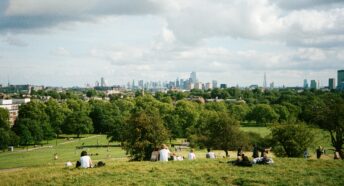The London Green Belt Council and CPRE London’s joint report Safe Under Us? highlights how government policies and sanctions appear to be forcing councils to release Green Belt land for development.

Drawing on local evidence provided by CPRE branches in Bedfordshire, Berkshire, Buckinghamshire, Essex, Hertfordshire, Kent, London and Surrey, the report demonstrates that the London Green Belt is likely to be under greater threat than ever. There are now plans for 203 sites within the London Green Belt including proposals for 123,528 homes.
Within the 42 local planning authorities that were surveyed covering nearly 84% of all London Green Belt land, the majority of the proposed homes (94%) are on sites allocated by councils in their Local Plan documents. The London Green Belt is also under pressure from infrastructure such as schools and roads.
The report finds that there is national pressure being applied to Local Planning Authorities to deliver inflated housing targets. These targets are inflated by unrealistic economic growth forecasts, forcing councils to give up Green Belt land.
The government’s planning framework states that only ‘exceptional’ circumstances should allow building on Green Belt land. However, unclear national planning guidance and confusing government messages are causing councils to believe that in order to gain national approval of their Local Plans, they must meet higher targets. This is causing them to look at Green Belt land to meet housing growth figures.
Richard Knox-Johnston, Chair of the London Green Belt Council said:
“Promises were made in the Conservative general election manifesto that the Green Belt would be “Safe under us”. However, councils are telling their residents that there is no alternative but to build in the Green Belt. Our evidence shows that in spite of the government’s promise, councils are responding to a series of national messages and policies which forces them to release Green Belt land to receive financial incentives and avoid sanctions.
“The system is clearly not working and is not protecting the Green Belt. It seems likely that the government target of two million homes by 2020 will not be met due to land banking and hoarding. By not taking action to unlock the land which already has planning permission, more pressure is being put on Green Belt land. We now need government to appreciate that this situation is not acceptable and to introduce measures to reinstate the protection of Green Belt as a matter of urgency.”
John Croxen, Chair of CPRE London, said:
“With the new government under Theresa May and her new Secretary of State, Sajid Javid, saying the Green Belt is ‘absolutely sacrosanct’ there is now an opportunity for government to change direction. We must keep up the pressure to ensure real protection for London’s Green Belt.”
‘Threats to London’s Green Belt’ Map
The data for ‘Safe Under Us?’ was based on the ‘Threats to London’s Green Belt Map, published in May 2016.
The Threats to London’s Green Belt Map was developed as part of a partnership project with the London Green Belt Council and CPRE branches in Essex, Kent, Beds, Bucks, Berks, Surrey, Herts and London. It shows the threats that we are aware of to London’s Green Belt: by a ‘threat’ we mean that there is a proposal to build on a protected Green Belt site or the Green Belt protection is at risk of being removed. The map can be viewed here.
Read about the Sunday Telehgraph’s coverage of the map here.
The information in this map is as accurate and up to date as possible. Data comes from Local Authority Green Belt Reviews; Draft Local Plans and adopted Local Plans; planning applications; Local Authority Strategic Housing Market Assessments / Strategic Land Availability Assessments and other sources. The map is not complete as it only shows the threats we know about. It is a constantly changing picture.
If you know of any threats not marked on this map, please tell us about them by emailing office@cprelondon.org.uk or calling 020 7253 0300.
Disclaimer: Although care has been taken to ensure the accuracy, completeness and reliability of the information provided, CPRE London assumes no responsibility for the information contained in the map.








